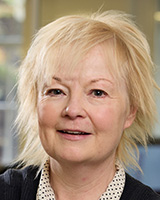Mobile broadband coverage – balancing costs and obligations
Digital dividend spectrum auctions are taking place across Europe over the coming year to award licences for use of the 800MHz band, which corresponds to the amount of spectrum previously allocated to broadcasting services that has been freed up following the switchover from analogue to digital television. This spectrum is widely acknowledged to be particularly valuable to improve mobile broadband coverage, particularly in rural and other ‘hard-to-reach’ areas.
However, whilst mobile networks delivering ‘universal’ coverage would represent the ideal solution from the perspective of mobile users living and working in rural areas, the commercial incentive to achieve this is more limited. In particular, the commercial feasibility is affected by real technical challenges in achieving coverage over difficult geographical terrains, resulting in a disproportionately high cost of rolling out base stations in rural areas, as well as the prospect of limited returns on investment per new base station installed, due to the highly dispersed and sparsely populated communities living in affected areas.
Recognising this challenge, regulators in Europe are proposing various approaches to setting coverage obligations for 800MHz mobile licences as a means of ensuring availability of at least one mobile broadband service in hard-to-reach areas. Approaches being used often depend on national policy objectives with regard to overall broadband coverage, since mobile broadband technologies such as LTE can be used to provide a solution to getting high-speed Internet to places without other forms of viable broadband connections.
The European Commission (EC) has set out broadband coverage goals across the European Union (EU), including 100% access to basic broadband services by 2013. Governments across Europe are actively planning towards achievement of this goal, as well as the more ambitious goal of at least 50% of the population subscribing to ‘ultra-fast’ broadband services of 100Mbit/s or more by 2020, and are considering the required interventions where necessary to ensure that rural populations are not disadvantaged.
The theoretical peak data rates specified for Long Term Evolution (LTE) within the standards body 3GPP exceed the EC’s 100Mbit/s goal. In practice, the theoretical rates are dependent upon various factors including the available bandwidth, local propagation and network loading conditions as well as multiple-input multiple-output (MIMO) (antenna) configuration. Typical rates will therefore be considerably less – around 20Mbit/s or less.
It is nevertheless likely that LTE will play an important part in improving broadband coverage, and could be more cost-effective to deploy than other options in rural areas to achieve the EC's ‘broadband for all’ goal set for 2013. The good propagation conditions of the 800MHz and 900MHz bands make these frequency bands particularly relevant to achieving this goal. Accordingly, whether to impose an appropriate coverage obligation upon one or more licensees using these bands is a critical decision that governments must make.
Specific coverage obligations have been included in the two 800MHz auctions completed so far in Europe. In Germany, 800MHz licensees are obliged to roll out to rural areas first, before rolling out to urban areas (which might already receive mobile broadband services over a 3G network in another frequency band). This in effect represents a ‘shared’ coverage obligation between all licensees, and it is up to individual operators to co-ordinate with regard to rolling out to particular areas (and in this way, potentially avoid costly duplication of infrastructure). In Sweden, a different approach was used, where an obligation was placed upon one licensee in the 800MHz auction to provide service of at least 1Mbit/s or better to a list of stated addresses (identified as being broadband ‘not spots’, lacking any other forms of broadband connection). The cost of achieving this coverage obligation in Sweden at least seems to have been reflected in the price paid for licences in that auction – see previous article ‘Swedish spectrum auction fails to reach German bid prices’. This reflects the fact that infrastructure capex is one of the most significant costs a mobile operator faces, hence there is a question of balance between the cost of acquiring the spectrum and the cost of achieving the coverage obligation.
In both the German and the Swedish cases, obligations reflect the fact that the high cost of infrastructure roll-out in rural areas means that, whilst competition is desirable, network duplication is undesirable in those areas.
The UK regulator, Ofcom, has become the latest European regulator to propose a coverage obligation on 800MHz licences – with a proposal in its recent consultation on the award of 800MHz and 2.6GHz spectrum that one of the licensees must provide coverage to an area where 95% of the population live, at a sustained downlink speed of 2Mbit/s, with a high probability of indoor reception. This represents a different approach to the German and Swedish cases, since it does not explicitly require operators to cover specific areas where availability of other means of broadband service is limited.
The consultation period for Ofcom’s proposals closed on 31 May 2011, and various, potentially conflicting, views upon the appropriateness of the proposed coverage obligation have been expressed in published responses, which Ofcom and the government will now have to reconcile. It is clear that if the objective is to link use of the 800MHz band with the government’s targets for extending broadband reach, Ofcom’s proposed obligation, as currently stated, does not achieve this. Other options, possibly reflecting the German and Swedish examples, might have to be considered – with consequential impact on network roll-out costs, and potentially, on auction proceeds as operators adapt their bids to reflect the capital costs of meeting the coverage obligation. Ultimately, the choice depends on the relative importance of achieving equitable access to mobile broadband services, relative to other broadband goals.
Authors

Janette Stewart
Partner, expert in spectrum management, policy and valuationLatest Publications
Article
Policy makers must explore all possible levers to achieve gigabit connectivity ambitions
Report
AI for connectivity: how policy makers can help digitalisation
Report
LEO satellite broadband: a cost-effective option for rural areas of Europe

